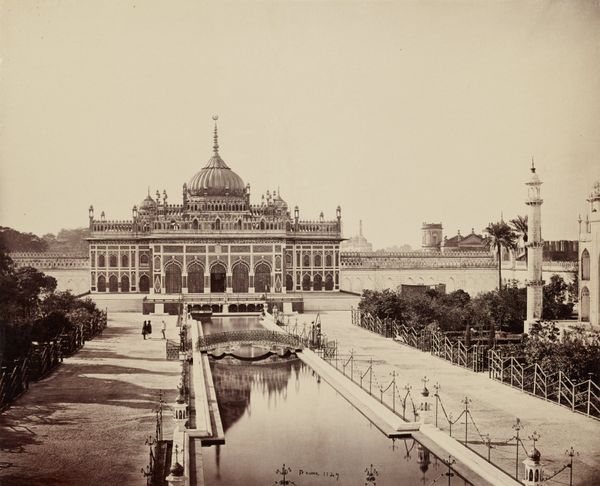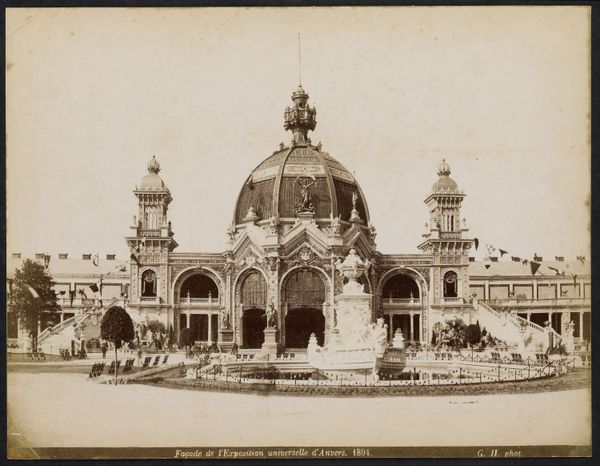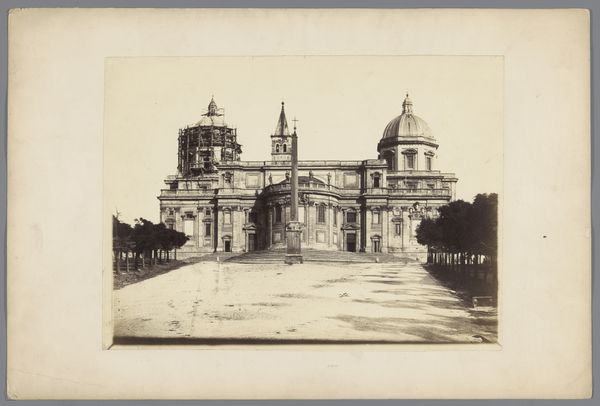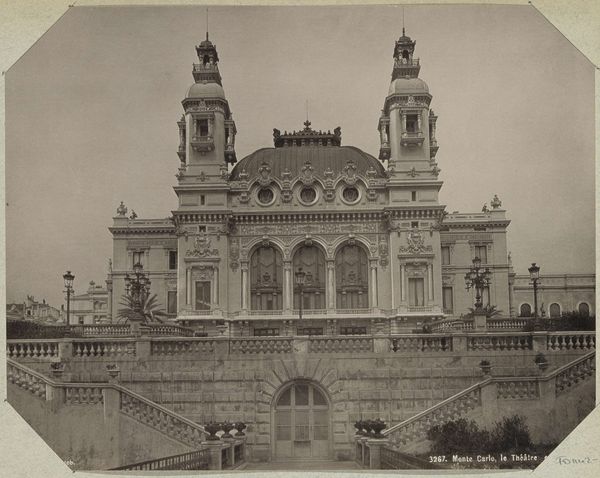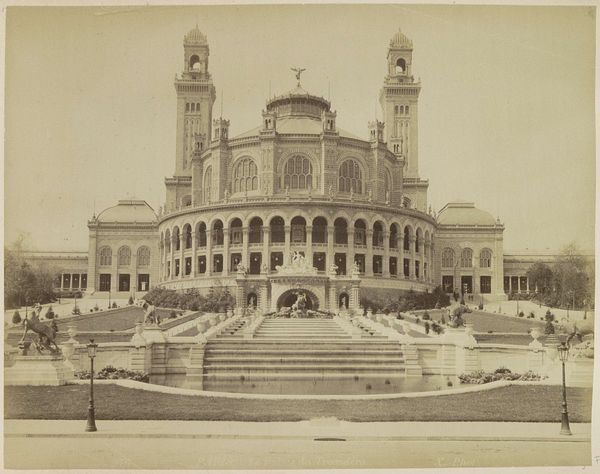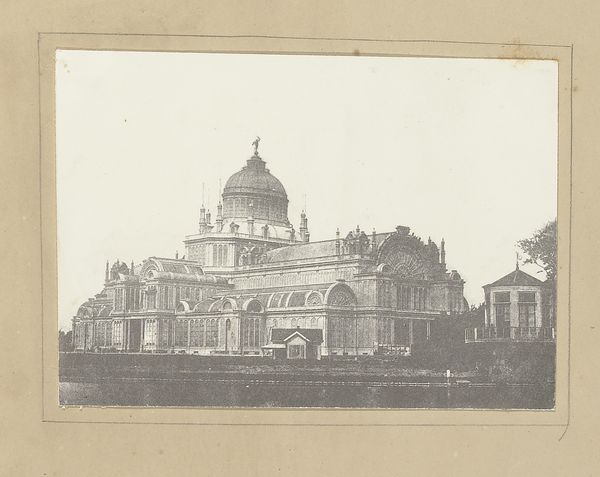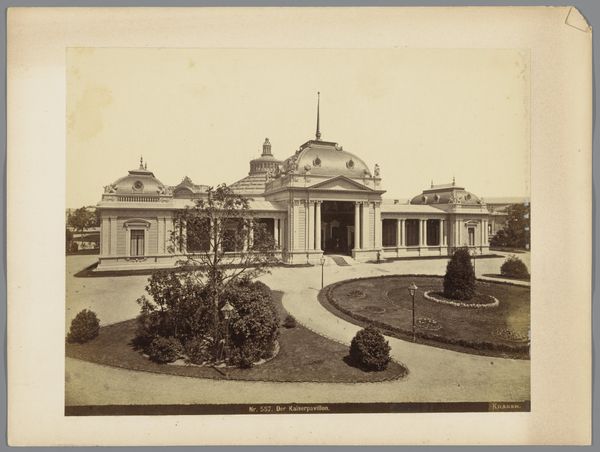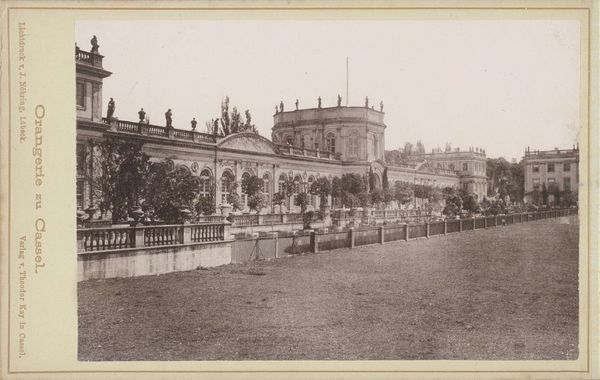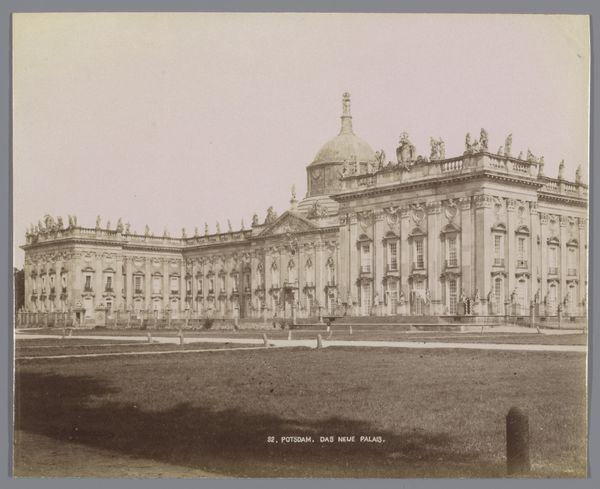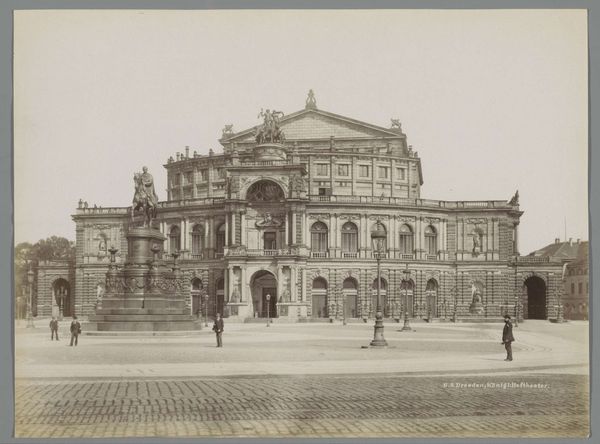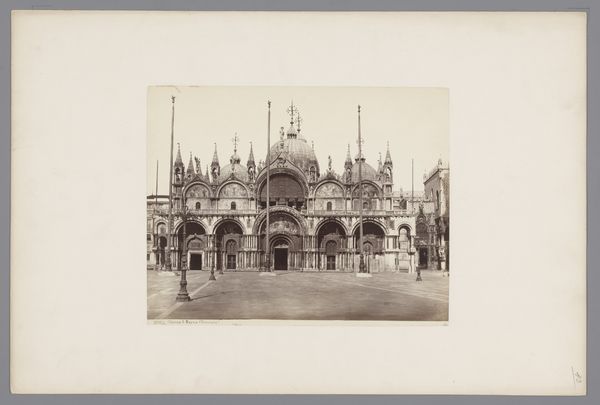
photography, albumen-print
#
16_19th-century
#
landscape
#
photography
#
historical photography
#
orientalism
#
cityscape
#
islamic-art
#
albumen-print
Dimensions: height 211 mm, width 274 mm
Copyright: Rijks Museum: Open Domain
This photograph of an imambara in Lucknow, India was taken by Samuel Bourne, who worked in the latter half of the 19th century. Bourne’s work is particularly interesting because he made use of the wet collodion process. It was a real feat of skill and labor. To create such images, he needed to coat a glass plate with chemicals, sensitize it, expose it in the camera, and then develop it – all before the plate dried. Because of this constraint, Bourne had to bring a portable darkroom with him everywhere he went. The results of the process are remarkable: fine details abound, like the surface of the water and the patterned facade of the imambara. The photograph offers us a glimpse into another time, and also makes us mindful of the labor and skill required to produce it. In this sense, it bridges both craft and fine art.
Comments
No comments
Be the first to comment and join the conversation on the ultimate creative platform.
